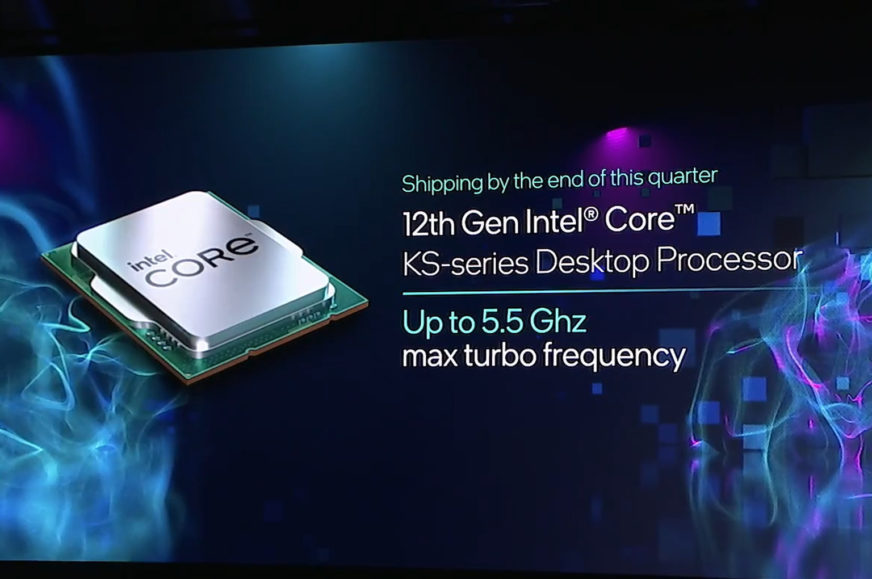Core i9-12900KS: World’s fastest CPU in gaming and single-thread performance
We have already reported on new Alder Lake CPUs released or introduced by Intel at CES 2022 (65W and 35W desktop models, 45W models for laptops a 9–28W mobile versions). But the company has pre-announced another addition: Core i9-12900KS. Intel has already confirmed and displayed this (so far) mightiest Alder Lake CPU and even set a rough release schedule. And we also learned the secret that is behind its extreme clocks.
The existence of a special version of the desktop Alder Lake with even higher performance than the Core i9-12900K has not exactly been a surprising reveal. Information about this plan has leaked before and Intel has even tweeted about it before their CES keynote. Despite of this Intel has still managed to surprise us with how high it has managed to bump the frequency on the 7nm (formerly 10nm) CPU. And that’s despite using a high IPC architecture which is likely making high frequencies more difficult to reach.
More: Intel Alder Lake/Golden Cove CPU core unveiled (µarch analysis)
Intel has shown the Core i9-12900KS during their CES 2022 keynote, or rather, the presenters have shown a computer running the chip, while confirming that the CPU will have a max 5,5 GHz boost. At the same time, it will support an all-core boost of 5,2 GHz on all of its big cores (P-Cores).
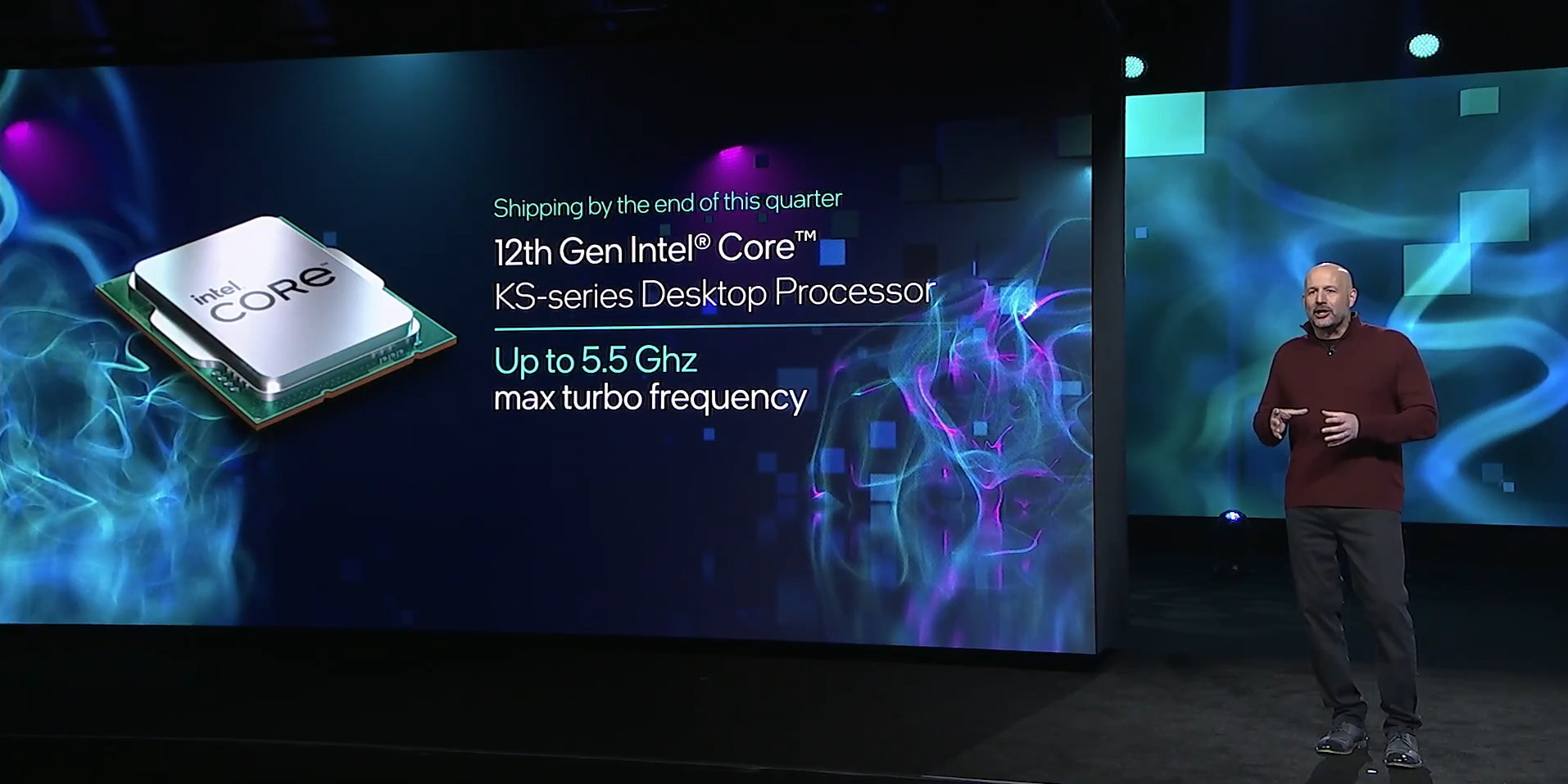
Any doubts that the leak has only been about overclocking (and maybe even with some kind of exotic cooling) have been ruled out with this. Such frequencies will be the default “from the box” settings (and thereby protected by warranty). Alder Lake will be the highest clocked CPU of the x86 architecture so far, and likely the highest clocked CPU in general regardless or architecture. And it seems certain that it will poses the highest single-thread performance in the world (even when compared with the much-lauded Apple ARM CPUs). Until surpassed by something newer in the future, of course.
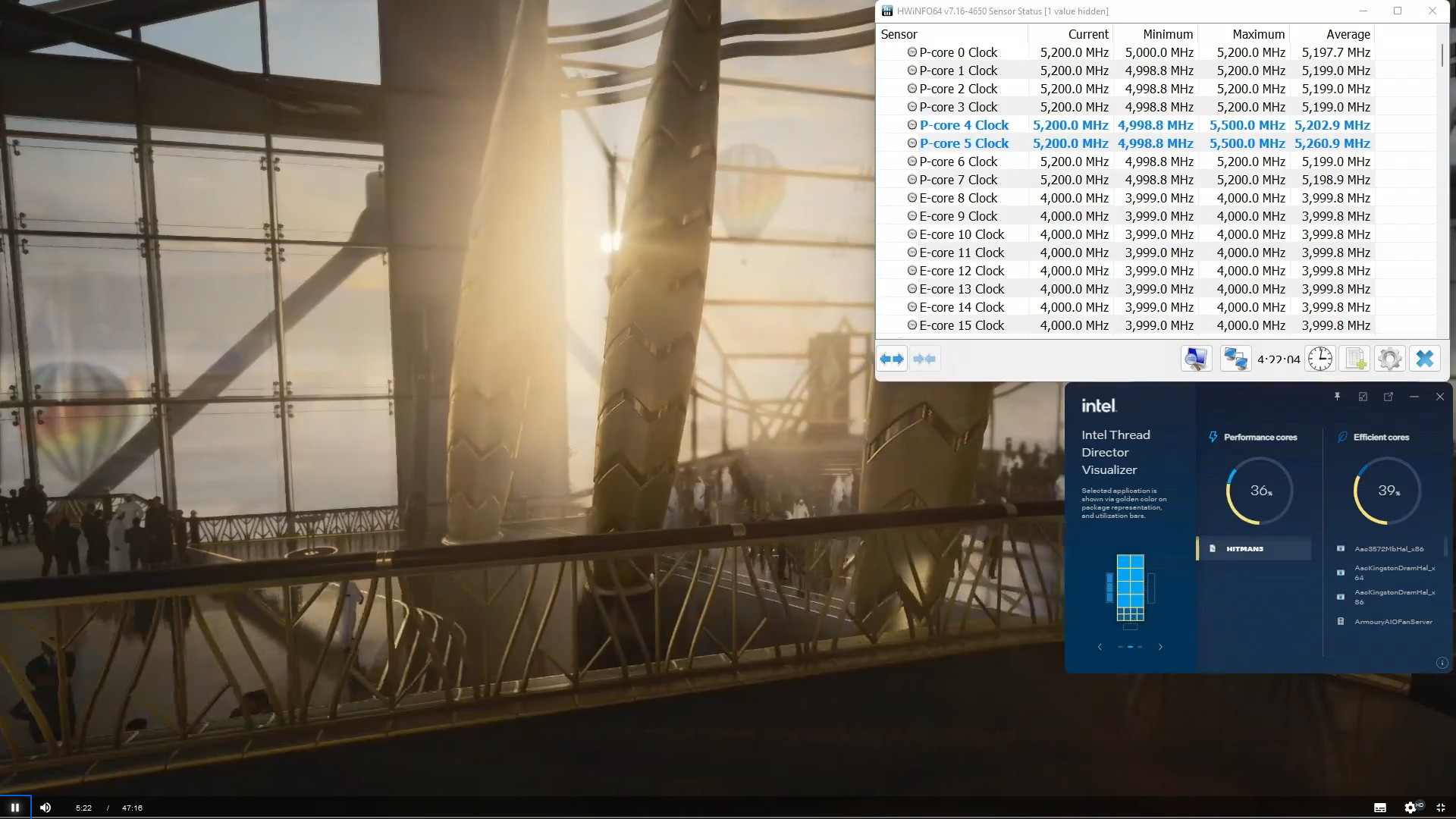
i9-12900KS utilizes Enhanced Thermal Velocity Boost
We currently do not have further information about the TDP and other parameters, like base frequencies. However one detail has been revealed by ASRock. The motherboard manufacturer has listed the addition of a Thermal Velocity Boost function intended for the Core i9-12900KS CPU in release notes of BIOS update for Z690 mainboards. This function has previously been used on the Rocket Lake and Comet Lake platforms, but it has not been used in Alder Lake’s desktop version so far. Actually, ASRock mentions “Enhanced Thermal Velocity Boost”, therefore the technology might have seen some improvement since the previous incarnation.
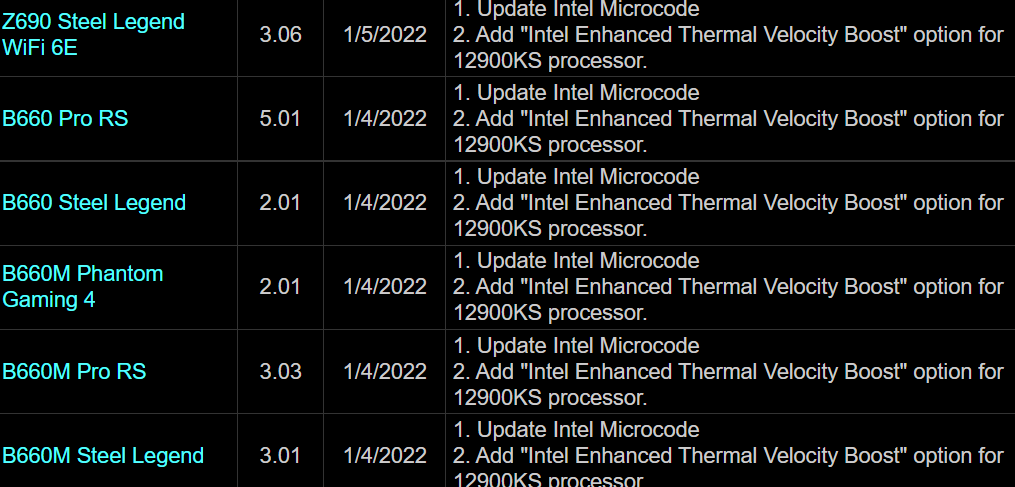
Thermal Velocity Boost means that the CPU is able to achieve higher speed via turbo, when its temperature is not exceeding a particular threshold. With the past CPUs, this threshold used to be 70 degrees Celsius – when below this limit, the e.g. Core i9-11900K could maintain a single-core boost up to 5.3 GHz, but after exceeding this temperature, only 5.2 GHz was allowed (given that the mainboard did not ignore such settings). Intel is about to use this technique again and it will become the means of achieving the high clock of Core i9-12900KS.
Thermal Velocity Boost and a sufficiently low temperature may be a prerequisite not only for the single-thread 5.5 GHz frequency but also for the 5.2 GHz all-core turbo as well. So far we do not know what the frequencies will be without this coolness-based benefit. They might be decreased by 100 MHz (as was the case on previous CPUs), but it might be more this time since we are talking about an “Enhanced” TVB. It is also almost certain that the 5.5 GHz frequency will not depend just on the Thermal Velocity Boost condition, but will also require the use of a preferred core (which is the Turbo Boost Max 3.0 technology used already by the Core i9-12900K SKU).
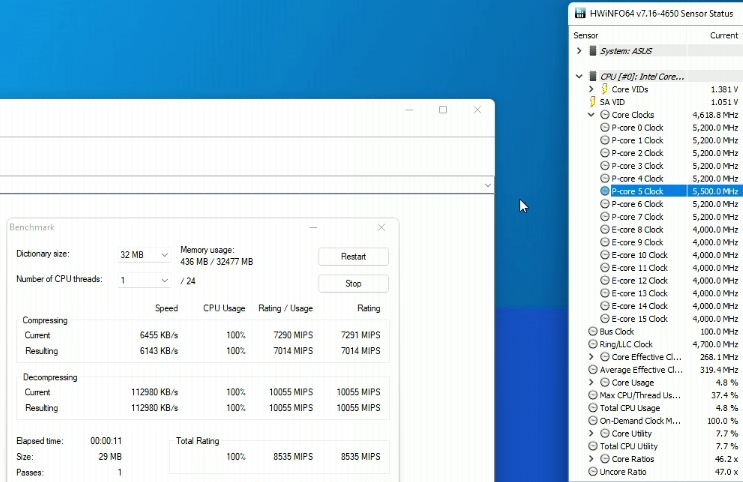
By the way, there are some clues indicating that Thermal Velocity Boost was originally intended to appear in Core i9-12900K as well. It seems it was likely planned to give a 100 MHz boost increase above the clock the chip runs at now – 5.3 GHz for single-thread and 5.0 for all-core boost. The first batches of the CPUs are reportedly fused for multiplier and voltage settings for these clocks, but do not use them (because the CPU has a separate overriding setting for a lower max frequency limit, which means those states are never used). Later batches allegedly lack these voltage definitions for the 5.3 GHz boost altogether. Why has this function ended up not being used on the i9-12900K, is something that is not known.
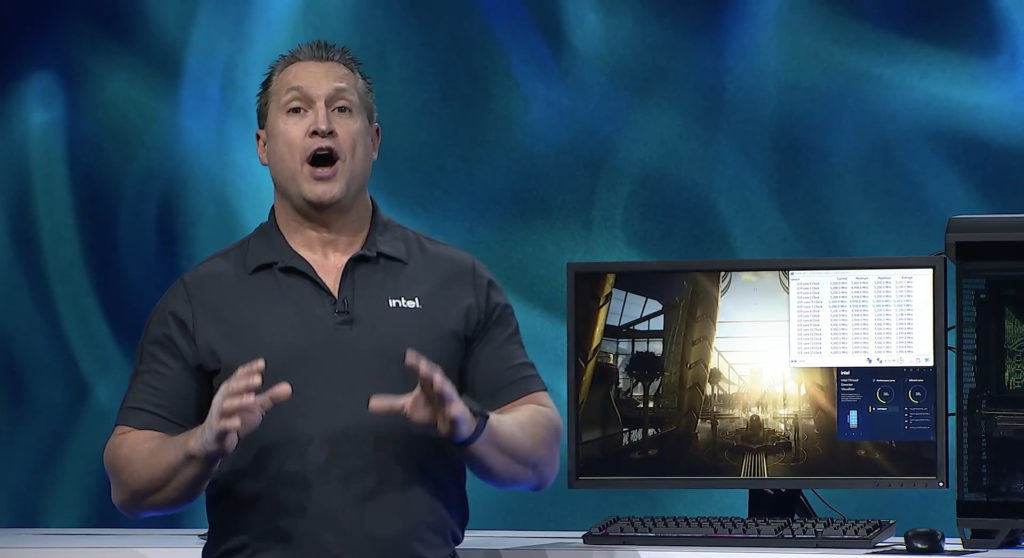
The release is planned for this quarter
Intel has not revealed the approximate price of the CPU at CES 2022. It should be logically a bit higher than with the Core i9-12900K. What however has been stated, is the release date. This CPU should be on the market before the end of the current quarter, likely in February or March. It will likely enter sales ahead of a similar special gaming CPU from AMD, the Ryzen 7 5800X3D with 3D V-Cache, because AMD’s statement about its release has only been “this spring”, which might mean April or even May (the competition for the title of fastest gaming CPU between this two might be interesting thing to watch). If you want the very best for your gaming set, it might be a good idea to wait a little for one of these CPUs.
It is not known how limited the supply of these CPUs will be. Previously, Intel made a similar product in the form of Core i9-9900KS, which has been a limited edition SKU, which has vanished from the shops once sold-out. There might similarly also be only a limited supply of Core i9-12900KS in theory, since it is likely made out of highly binned best-quality silicon dies. Intel has stated the “Q1” date while talking about availability for OEM computer producers by the way, so it is therefore possible that the CPU might only became available for individual retail purchase a bit later. On the other hand, this might have simply been a badly-worded communication and the the CPU will in fact enter our retail markets during the first quartal, too.
Sources: Intel, VideoCardz
English translation and edit by Karol Démuth, original text by Jan Olšan, editor for Cnews.cz
⠀





